The (responsible) gardener behind the unexpected displays at NYC's most stylish restaurants and hotels.
Thomas Little of Urbangreen Gardens can't resist a good container.
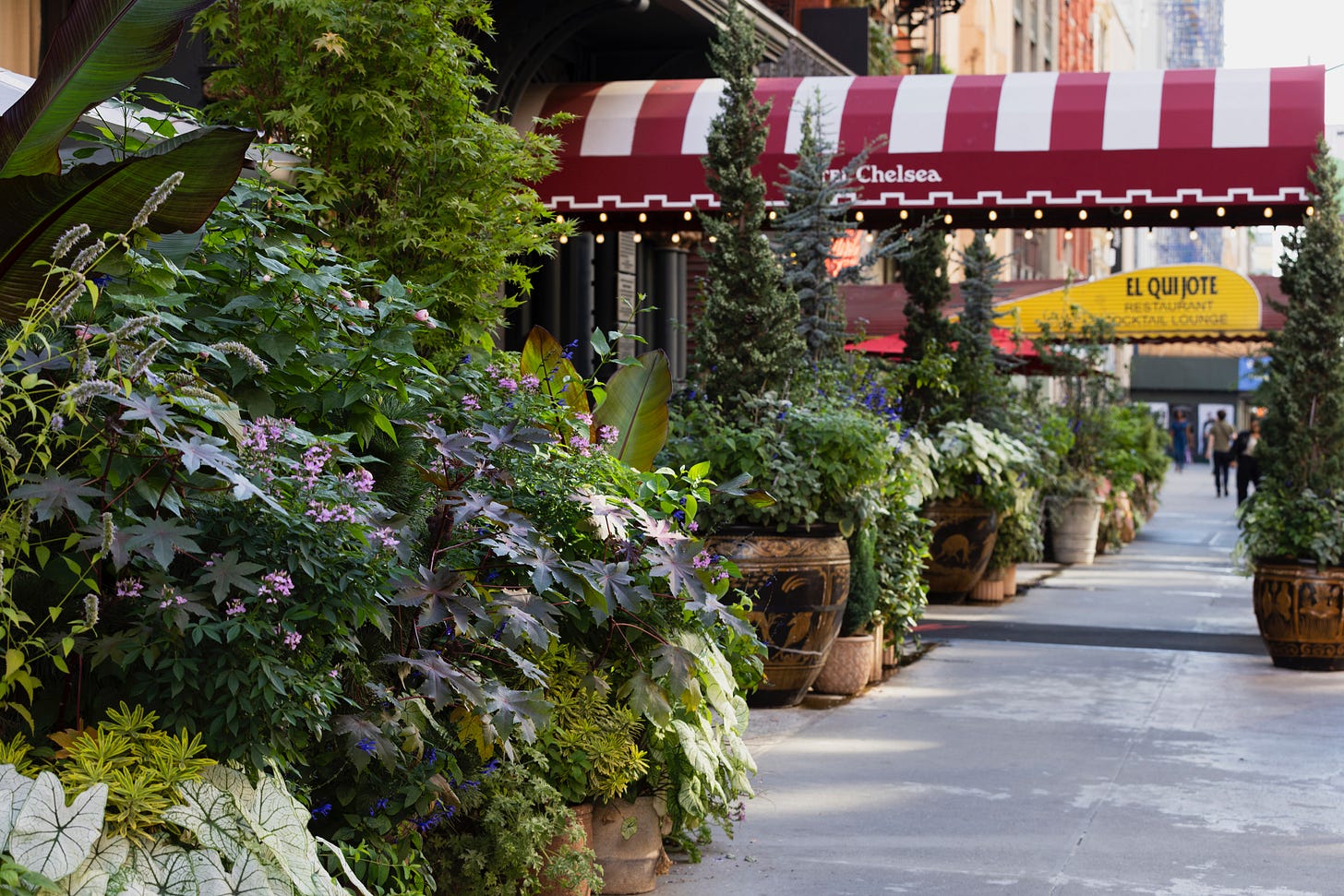
Welcome to Second Story, a newsletter for people who love history and old houses. Not a subscriber? Consider signing up below. If you’re already on the list—thank you!—and please tap the heart at the bottom of the page to help this article in the Substack algorithm. XxR
Last summer, my partner John and I celebrated his birthday at Le Coucou, a downtown French restaurant as beloved for its pike quenelles as for its chic Roman & Williams-designed dining room, complete with Hoffman chairs and tapered candles on every table.
But that June evening, something else struck me: the entrance, unexpectedly decorated with several layers of charming pots overflowing with flowers, lush greenery, and small trees.

Visit a few of downtown Manhattan’s most stylish restaurants—Le Mercerie, The Chelsea Hotel, Locanda Verde, Pastis, Nine Orchard, just to name a few—and you’ll notice more arrays of quirky architectural pots and inventive plantings. These enviable urban oases are the work of one man: Thomas Little of Urbangreen Gardens (@Urbangreengardens).
“When I moved to Park Slope in 1990 with my partner, I was struck by the front stoop culture,” Thomas told me one Tuesday morning while tending to the backyard of a West Village townhouse. “Stoop sales, people hanging out and drinking wine. It was the urbane version of the suburban front yard or porch, and everyone had potted their steps up to the hilt! I loved the individuality.”
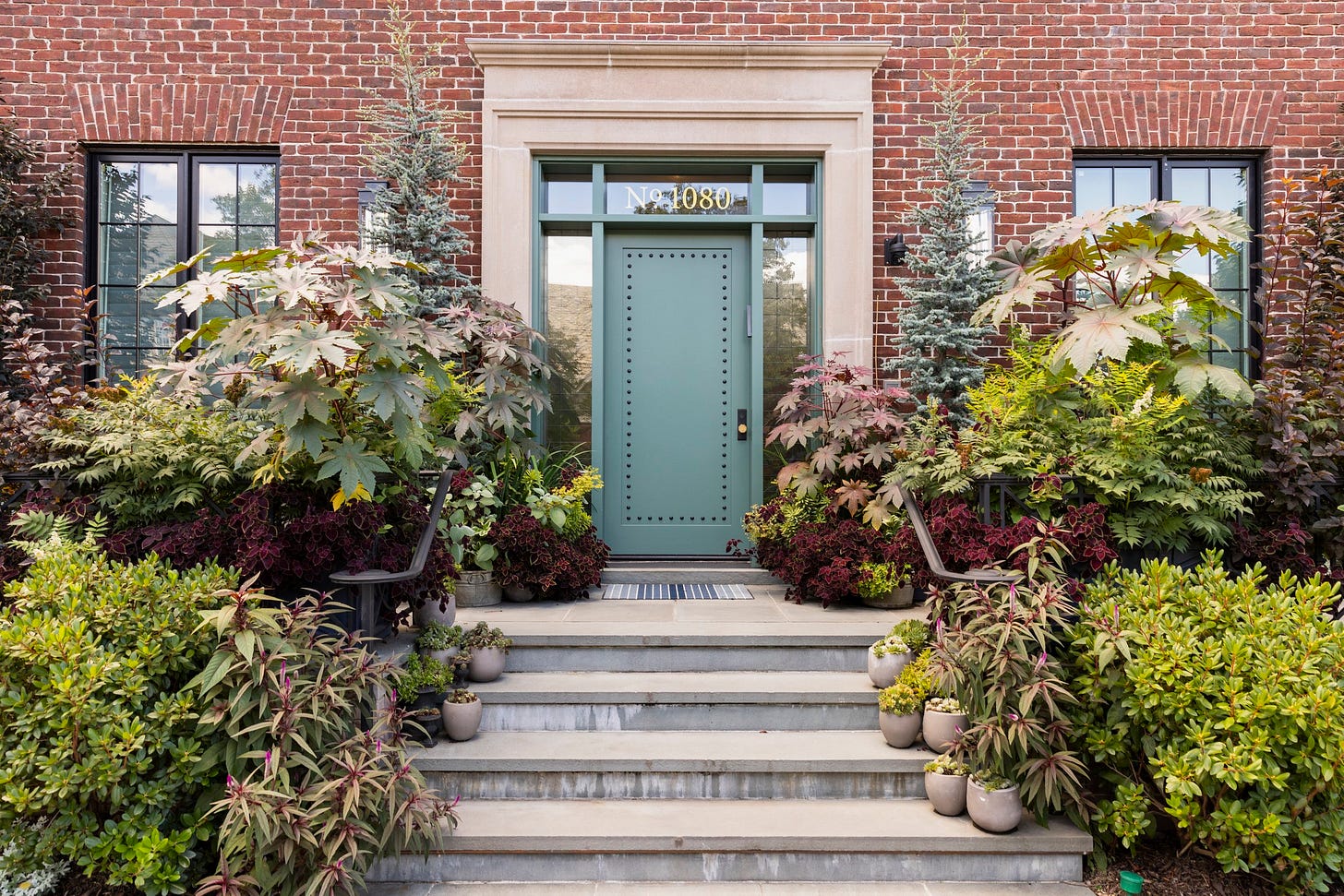
Fast forward a little over a decade, and Thomas, who had been working at Jeff Koons’s studio, decided it was time for a career change. Not knowing exactly what to do, he listed his gardening abilities on Craigslist. “I called myself a master gardener—more than a stretch.” The ad was answered by Ken Friedman, who was working with chef April Bloomfield to open a new gastropub in the West Village: The Spotted Pig1.
“Ken and April asked me to do a planting for their new restaurant. I hadn’t done anything like that before, but the Park Slope stoop culture inspired me,” Thomas recalled. What he devised set the stage for Urbangreen Gardens: A dressed-down scheme of pots and objects repurposed as planters (Thomas remembered using tomato cans) filled with seasonal plants and herbs. “The owners wanted to show that this restaurant had real people behind it, not some anonymous venture. The design had a humbleness to it, and it became the seed for my stylistic viewpoint.”
Over the past 25 years, Thomas has cultivated an inventive, refined, and rebellious gardening style, marked by his signature use of pots and containers to shape the garden’s identity. “Containers are the easiest way to bring personality into a garden. They can be stacked to create dynamic levels and bring almost a jazzy rhythm. It’s almost like adding a character to a play.”

His installation at the Spotted Pig led to work at now-closed sister restaurants, The John Dory Oyster Bar and the Breslin. Before long, he was also designing for Locanda Verde, the interiors of Brooklyn’s Ace Hotel, and the façades of The Dutch, Le Mercerie, and Le Coucou. “I was introduced to Robin Standefer and Stephen Alesch of Roman & Williams, and we immediately hit it off. Robin and Stephen celebrate individuality, and they really recognized the different perspective I bring to my designs.”
Though Thomas is known for his whimsical and unexpected displays, he considers himself, first and foremost, a responsible gardener—someone who thoughtfully selects plantings to create a complex, biodiverse, and in some cases, self-sustaining garden.
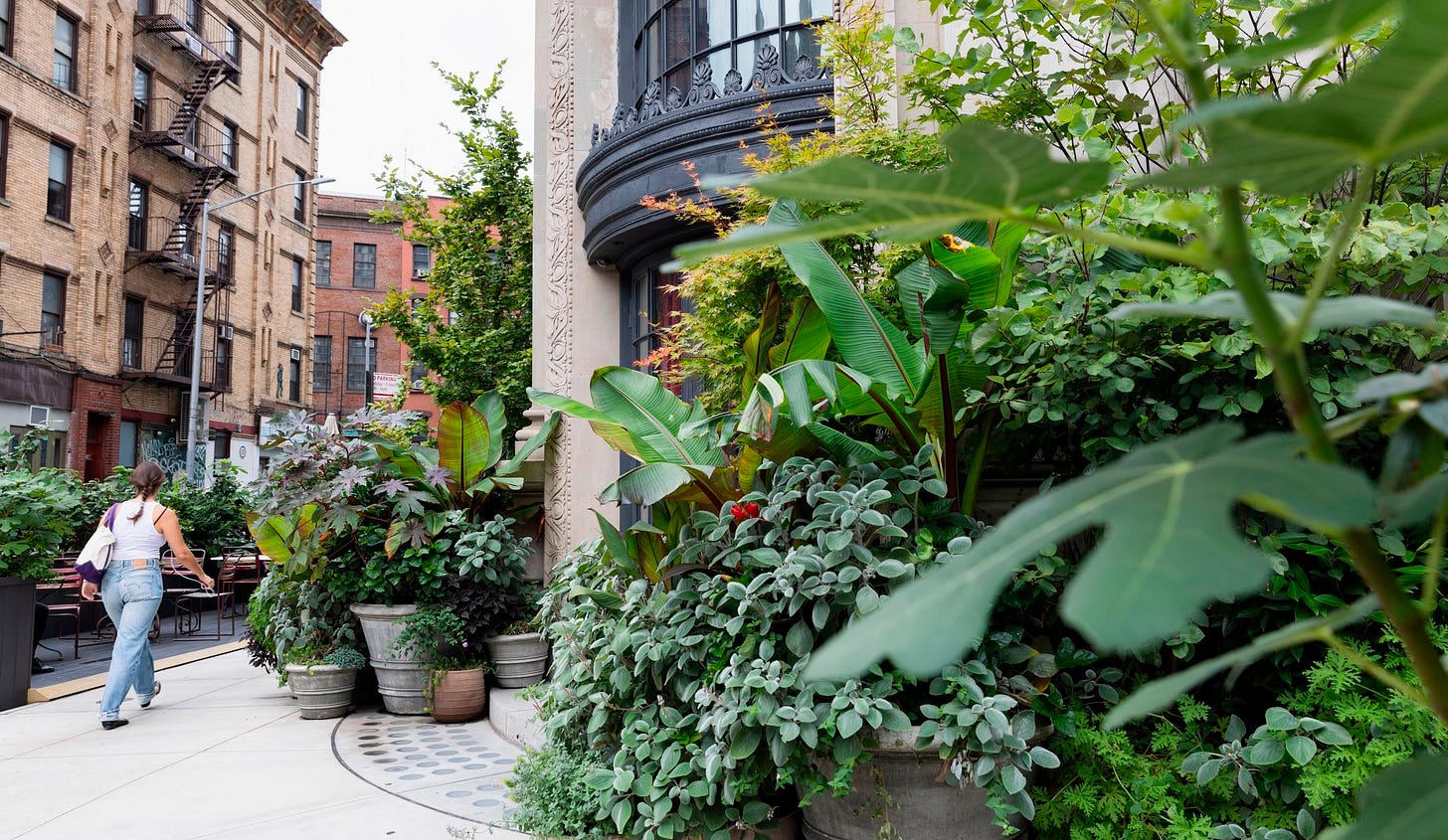
“There’s a beauty to checking your ego at the door, and asking mother nature to be patient and guide you and teach you—you have to follow her rules. The containers, those can have no rules!”
Working increasingly with native plants to support a healthy environment and encourage pollination, he loves the charming patchwork jumble of flowers and plants found in cottage gardening. As he explained, the style has roots in communities of densely settled workers’ cottages, where each small front garden expressed its own individuality through unique plantings.

“I really don’t like minimalism, using too much of one plant to create a monolithic effect,” Thomas said. “If one gets a disease, then all of the same plants are going to get it. Right now, Virginia Creeper is suffering because the lantern flies are eating it. When you have a garden that’s like a patchwork or a quilt, it’s forgiving, isn’t it? If a corner dies, who cares? You’ll replace it and nobody will notice. It’s an opportunity to make that corner even better than before.”
“It’s an opportunity to make that corner even better than before.”
“I love to go to local nurseries wherever I am installing a garden,” he said. “They are able to direct me to what will thrive in the area. My gardens are probably 70%-80% self sustaining. They take on their own life, some things take over other things recede. We let the garden settle and find a compatibility in itself.”
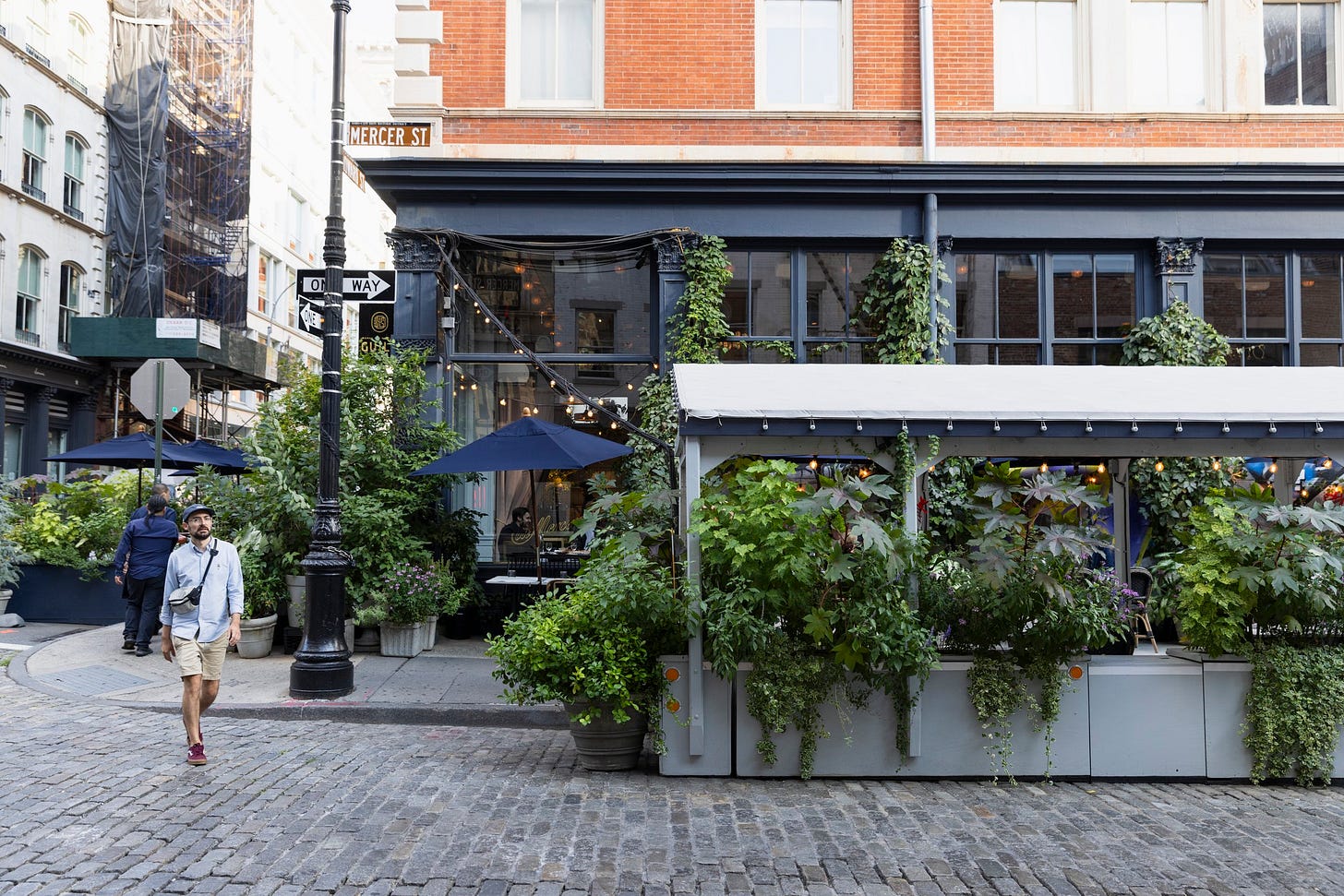
He also practices xeriscape landscaping, designing gardens that require minimal water. He said that although plantings are location specific, one of the easiest ways to conserve water is to uses grasses, replace evergreen shrubs with scotch broom, and use thyme, which grows in most places except where it’s very sandy, for a lawn.

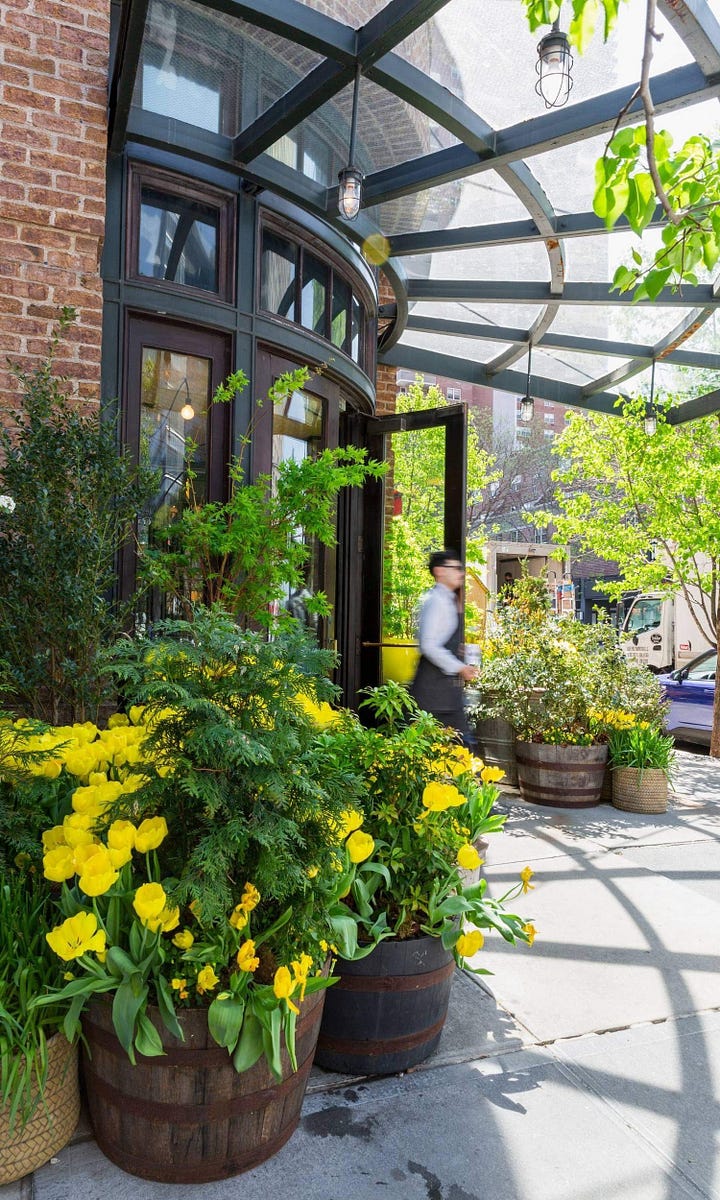
What struck me about Thomas’s gardening philosophy is how easily it scales, from individual private gardens to a large rooftop project. There’s a humble recognition that he is simply working with an environment, not imposing on it. He selects plants that will thrive and never forces a design if conditions won’t support it.
That applies whether he’s in the bucolic Catskills or the sidewalks of Manhattan, where his impact is most unexpected. His lush, whimsical, and slightly rebellious container gardens transform how one enters a restaurant or hotel—or even just passes by.
“New York is a place with so much uniqueness and street life,” says Thomas. “I like to think that I’m doing my part in keeping that alive. For me, it’s less design, and more philosophy.”
THE INCORRIGIBLE GOSSIP
Brooke Astor’s Maine House is back on the market. It’s asking $6.5M and a New England dream.
My partner John loves this aged sherry vinegar for salad dressings.
I think I need a hand-painted historic woodsign in my life.
Our Geneva, NY rowhouse might be getting a new coat of paint soon! We’re thinking Capitol White and Essex Green for the shutters. But trim/accent color is still TBD… thoughts?
Sometimes I like to listen to Bleecker Street by Simon & Garfunkel and think about the New York of the past. 🎵“$30 pays your rent on Bleecker Street.”🎶 Oh, Simon. Did it?
This piece previously stated that April Bloomfield answered the ad. The error was corrected.




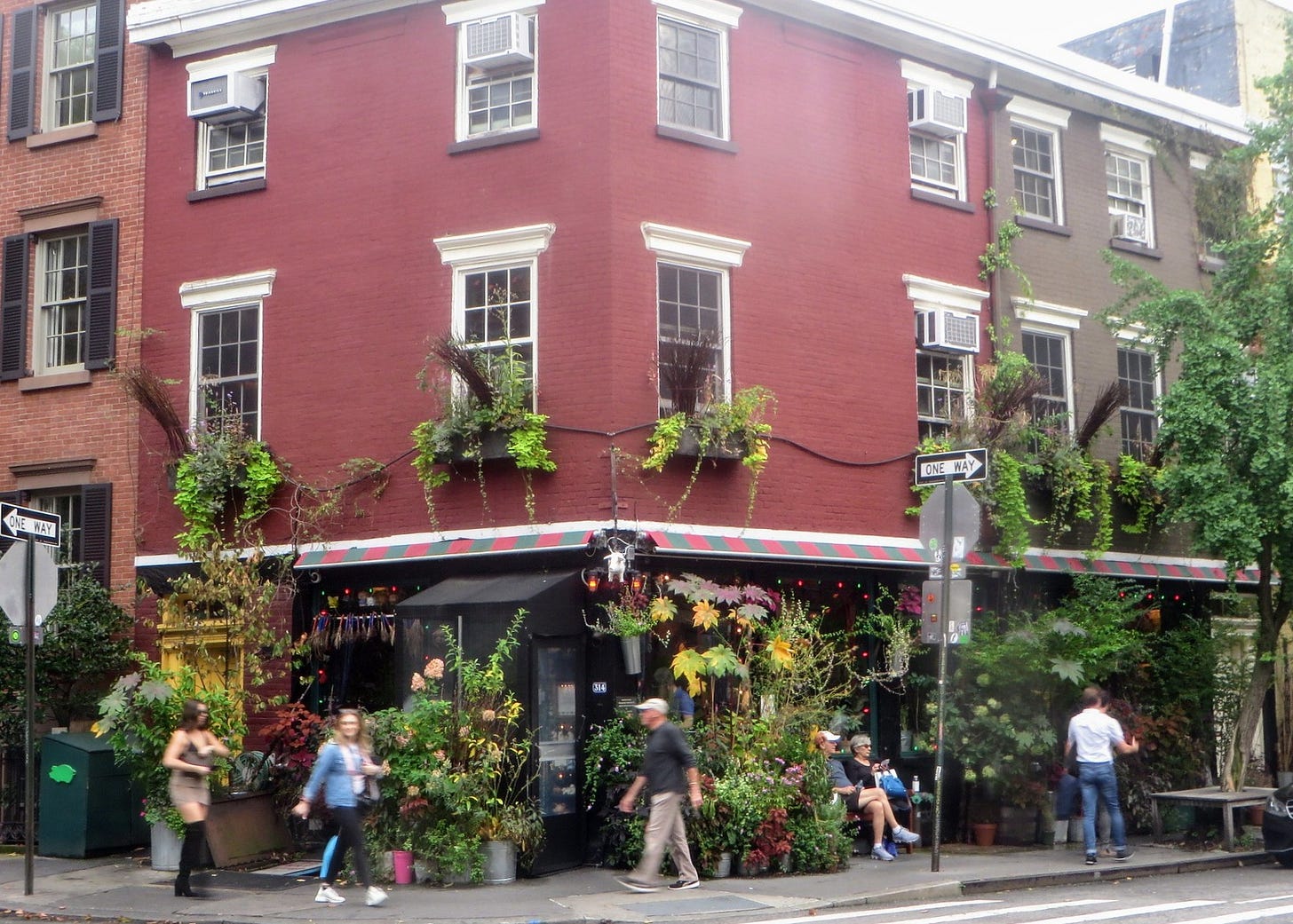
So cool!! Great story Robert :)
Love all the plantings—they are so rich and lush and add so much personality!! He is clearly very talented!